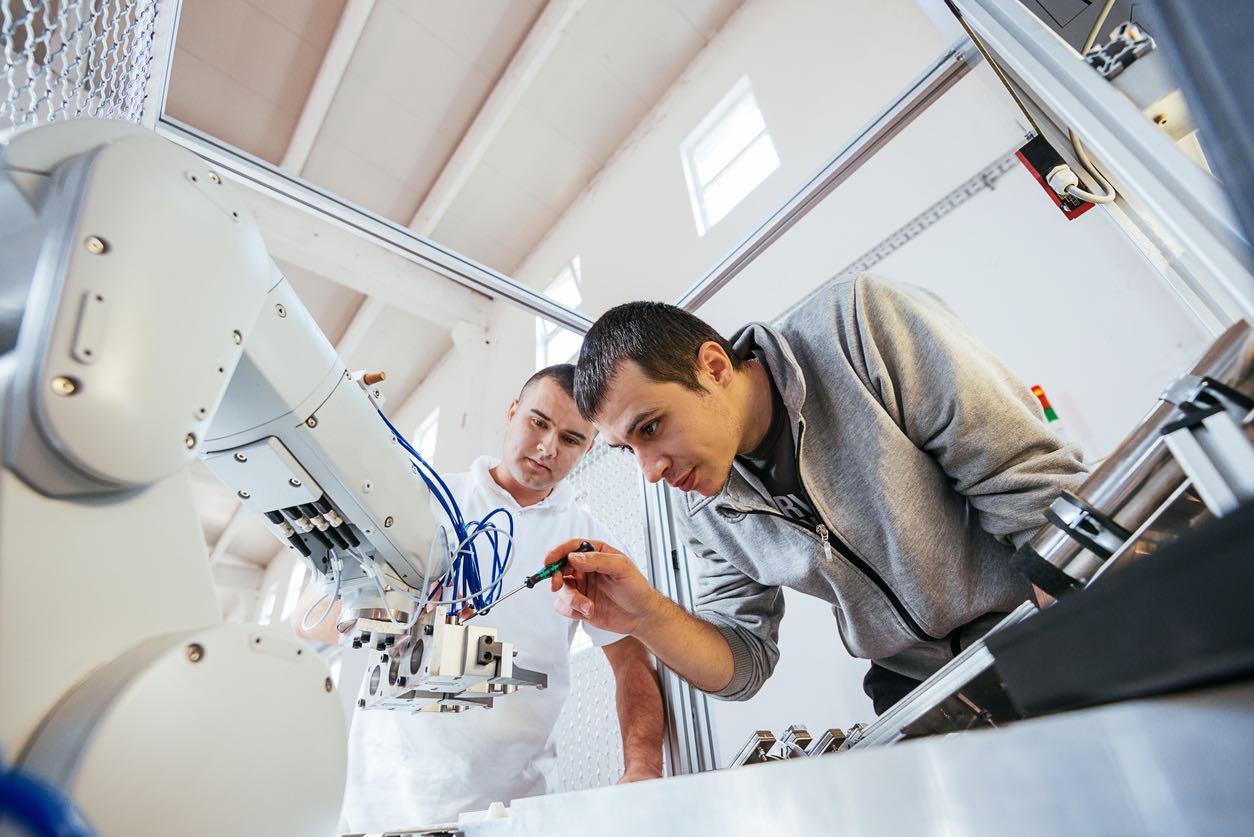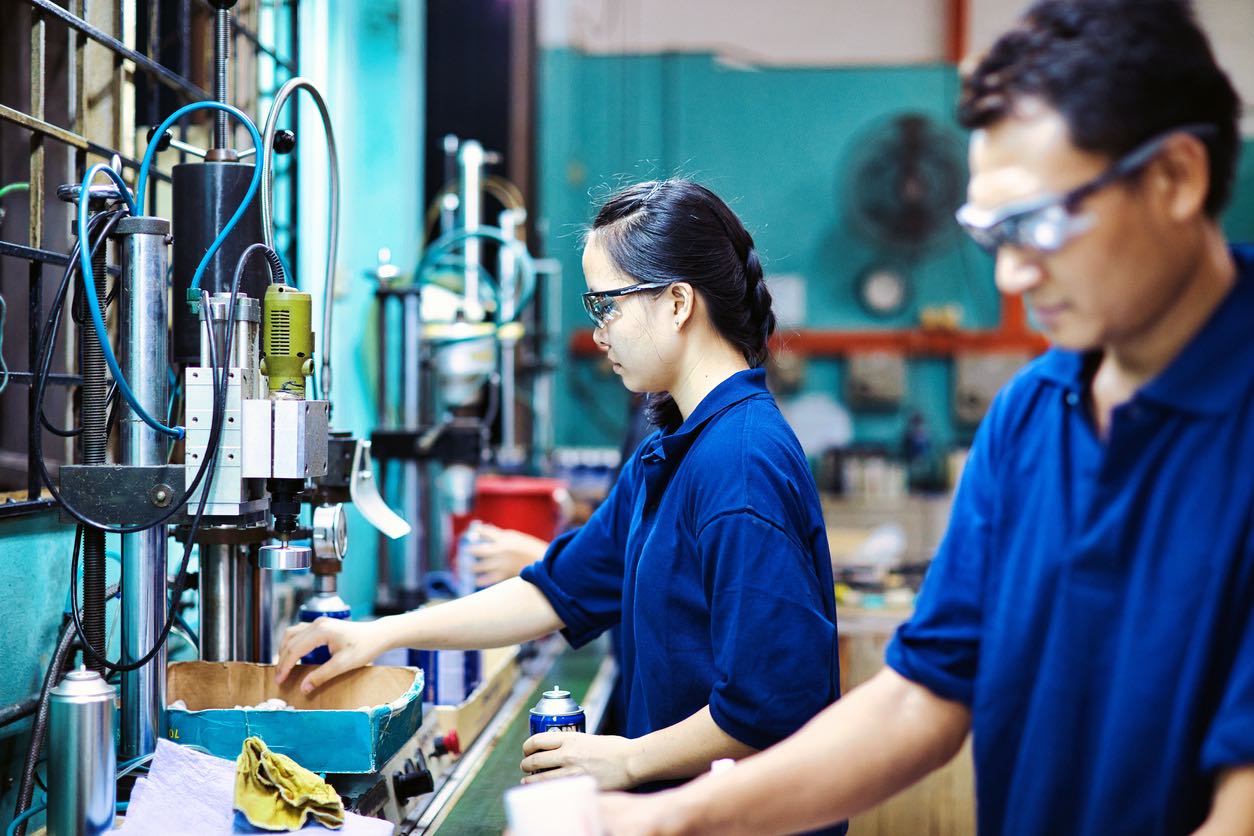American manufacturers are faced with the constant task of maintaining their competitiveness while controlling expenses in today’s intensely competitive worldwide market. Rapid technology breakthroughs, changing consumer needs, and ongoing pressure from global competition have changed this landscape. As a result, US manufacturers are putting more and more of their attention into creative ways to improve their productivity and reduce wasteful spending. This blog post offers a thorough how-to, revealing 15 essential strategies that help save production costs and improve overall competitiveness. These tactics include applying lean manufacturing techniques, which are renowned for their ability to reduce waste, as well as implementing cutting-edge technology that redefine productivity and efficiency. These strategies, which are tailored to meet the various demands of the enormous U.S. manufacturing sector, provide companies of all sizes with a guide on how to stay competitive and guarantee their position in the international marketplace.
It is impossible to exaggerate the significance of cost reduction in the industrial industry. In an environment when profit margins are narrowing and labor and material prices are rising, the ability to efficiently manage and cut costs can be the difference between prospering and just surviving. This blog post explores the subtleties of each cost-cutting tactic in greater detail and offers manufacturers a thorough road map for maximizing output quality, optimizing resource use, and reducing operating expenses. These techniques are designed to provide concrete answers to the intricate problems that modern businesses face, whether it is by improving worker productivity, integrating smart manufacturing practices, or streamlining supply chain operations. Through the use of these approaches, American manufacturing companies may maintain and enhance their market positions, guaranteeing long-term expansion and financial success in a constantly evolving industrial environment.

In today’s cutthroat manufacturing environment, lean manufacturing—a notion that has completely transformed the production world—is more than simply a catchphrase. It is a thorough strategy that aims to reduce waste and inefficiencies while increasing customer value. Adopting lean principles helps American manufacturers become leaders in efficiency and innovation by improving productivity, quality, and streamlining their processes. The fundamental ideas of lean manufacturing are examined in this part, along with practical applications that can lead to notable enhancements in the production process.
A. Lean Manufacturing Fundamentals Lean manufacturing is a revolutionary technique that changes the way production is perceived and carried out. It is firmly based on the ideas of the Toyota Production System from Japan. It is focused on providing clients with the most value possible by tenaciously seeking to eradicate waste in all of its manifestations. Anything that, in the eyes of the consumer, doesn’t improve the final product qualifies as waste. Lean manufacturing is about optimizing every part of the production process, from resource usage to workflow efficiency, for American manufacturers. It’s not only about decreasing prices. This strategy is crucial in the fast-paced market of today, where competitive pressures and client demands necessitate quick and effective production techniques.
B. Identifying and Reducing Waste The process of identifying waste and eliminating it in a methodical manner is the foundation of lean manufacturing. Overproduction, waiting, transport, over-processing, inventory, motion, and defects are the seven categories of waste that indicate the non-value-adding activities in the manufacturing process. For instance, overproduction results in excess inventory that takes up resources and space, and motion is any needless movement on the part of employees or equipment that doesn’t add value to the product. American manufacturers can identify waste by visualizing their complete production flow and implementing techniques like value stream mapping. Another essential lean methodology is just-in-time manufacturing, which aims to drastically cut costs and waste by only creating what is required, when it is required, and in the required quantity. Through careful identification and mitigation of various waste types, businesses can save expenses while simultaneously enhancing operational effectiveness and product quality, which in turn boosts customer satisfaction.

Automation arises as a key factor in the dynamic world of manufacturing, radically changing the face of the manufacturing industry. It provides a route to previously unattainable levels of efficiency, quality, and customization potential and is powered by developments in robots and artificial intelligence (AI). This section explores how automation may drastically cut production costs, how important it is to strike a balance between costs and benefits, and real-world instances of automation solutions.
A. Automation’s Transformative Role In the manufacturing industry, the integration of automation, driven by AI and robotics, has been nothing short of revolutionary. It has ushered in a new era where jobs that were before completed by hand are now completed quickly and precisely by machines. This change not only lowers labor expenses but also achieves unprecedented levels of product quality. Additionally, mass customization is made possible by automation, which enables producers to create a wide range of products with the same efficiency as mass-produced goods, satisfying a wide range of consumer preferences.
B. Weighing the Costs and Benefits Using automation in manufacturing is a strategic investment rather than merely a technology advancement. Because the initial costs are high, a thorough cost-benefit analysis is necessary. Manufacturers have to take into account indirect expenses like staff training and the integration of new systems with current processes, in addition to direct expenditures like equipment purchase and installation. In the current manufacturing scenario, automation is a financially sound decision because the long-term benefits, such as improved productivity, higher-quality products, and the ability to grow operations efficiently, frequently outweigh these early costs.
C. Examples of Automation Solutions
- Collaborative Robots (Cobots): Cobots, which are made to securely collaborate with humans, are a technological innovation in automation. They are perfect for jobs like assembly, packing, and quality control since they are adaptable, simple to use, and reasonably priced. When used, they can greatly lower the cost of physical labor while increasing manufacturing efficiency.
- Automated Guided Vehicles (AGVs): Automated guided vehicles (AGVs) are now a crucial part of manufacturing facilities’ material handling and logistics processes. These autonomous trucks move goods effectively, saving labor expenses and lowering the possibility of accidents at work, all of which add to a more secure and effective working environment.
- Predictive Maintenance: By using data analytics, this device can anticipate equipment problems before they happen. Manufacturers may minimize expensive downtime, increase the longevity of their machinery, and guarantee continuous production flows by taking proactive maintenance measures.
- Automatic Inspection Systems: These systems check products for flaws using sophisticated imagery and sensors. Manufacturers can guarantee consistently high-quality products, lessen the chance of recalls, and save associated expenses of quality-related concerns by automating quality control.
To sum up, utilizing automation’s power is revolutionary for the manufacturing industry. It has many advantages, such as increased production flexibility, improved quality, and cost savings. Technology will continue to open doors and propel industry toward a more inventive, efficient, and productive future as it develops.

Supply chain management optimization is critical to operational success in the highly competitive U.S. manufacturing industry. In addition to lowering costs, an effective supply chain improves customer happiness and product quality. This segment delves into the ways in which manufacturers can transform their supply chain by means of rigorous inventory control and strong supplier connections, guaranteeing a smooth transition from raw materials to final goods.
A. The Crucial Role of an Efficient Supply Chain A well-functioning supply chain is a strategic advantage as opposed to just a logistical requirement. Manufacturers may establish a delicate balance between supply and demand by optimizing supply chain procedures. This lowers wasteful inventory expenditures while guaranteeing that items are available when needed. Furthermore, by guaranteeing the prompt delivery of components and raw materials, a well-managed supply chain improves overall product quality and helps to prevent production delays that may lower quality.
B. Inventory Management Optimization
- Just-In-Time Manufacturing: Inventory management has never been the same thanks to Just-In-Time (JIT) manufacturing. JIT drastically lowers the requirement for substantial inventory holdings by closely matching production schedules with demand, which lowers storage costs and the chance of obsolescence of inventory. While accurate demand forecasts and trustworthy supply chain partners are necessary for this strategy to work, when done right, it may significantly cut waste and boost productivity.
- Demand Forecasting: Precise demand estimation is necessary to sustain ideal stock levels. Manufacturers may more accurately predict future product requests by using predictive analytics, industry trends, and previous sales data. Because of their foresight, they are able to modify their production plans and inventory purchases so they have exactly the right amount of stock to meet demand without having to invest capital in extra inventory.
C. Enhancing Supplier Relationships
- Reduced Lead Times: Lead times can be greatly shortened by fostering cooperative, strong partnerships with suppliers as needed. In order to ensure that materials arrive when needed and production schedules stay on track, suppliers can better anticipate demands and respond to requests swiftly when they are firmly integrated into the planning and production processes.
- Negotiating Better Pricing: Having a good rapport with suppliers makes it easier to bargain for lower prices. Manufacturers and suppliers can collaborate to find cost-saving options, such bulk purchases or long-term contracts, which can result in more advantageous price arrangements, by knowing each other’s business goals and limits.
- Improving Supply Chain Transparency: An essential component of supplier partnerships is transparency. Supply chain disruption risks are decreased when there is clear communication and visibility into each other’s activities. This openness enables producers to anticipate problems before they arise, keep up a constant flow of work, and continuously satisfy customers.
In conclusion, optimizing supply chain management is a complex process that necessitates consideration of supplier relations and inventory control. Manufacturers may attain a more flexible, economical, and high-quality production process by optimizing these areas, which will position them for success in the cutthroat US manufacturing market.

The effectiveness of labor is a critical component that impacts overall productivity and operational cost-effectiveness in the ever-changing manufacturing scene. Manufacturers may maximize their use of resources and create an environment that is creative and high-quality by improving labor efficiency. In order to increase labor efficiency and lower operating costs in the manufacturing sector, this section explores the importance of skilled workers, successful retention tactics, and the advantages of job rotation and cross-training.
A. Importance of Skilled Labor Investing in the training and skill development of your workforce is an investment in your manufacturing company’s future, not merely an operational cost. In addition to being more productive, skilled workers also contribute better craftsmanship to the production line, which lowers waste and raises the caliber of the final product. This effectiveness results in less errors and quicker manufacturing times, which lowers costs and raises customer satisfaction. Furthermore, knowledgeable workers are better suited to manage the complexity of contemporary industrial technology, facilitating a more seamless integration of cutting-edge machinery and procedures.
B. Strategies for Retention In order to keep a steady and seasoned workforce—which is essential for continuous productivity and quality—effective employee retention techniques are essential. While paying competitive salary is a simple strategy, employees frequently feel more purpose and direction when they have clear career progression options. In addition to promoting employee loyalty, a pleasant work environment that values inclusion, respect, and open communication also nurtures a culture of innovation and ongoing development. The sum of these elements contributes to lowering the high expenses of staff turnover, such as hiring, training, and knowledge loss inside the organization.
C. Job Rotation and Cross-Training The manufacturing floor can benefit greatly from strategic labor management techniques like job rotation and cross-training. Job rotation keeps the workplace lively and interesting by exposing workers to a variety of tasks and responsibilities, which raises job satisfaction. By preventing the monotony that comes with repetitious work, this approach also helps employees grow their skill sets, which increases their versatility and value to the company. Contrarily, cross-training guarantees that workers possess a range of abilities, enabling more adaptable workforce deployment. This adaptability is essential for meeting changing demands for output and can result in better utilization of human resources, lower idle time, and increased productivity.

The incorporation of smart technology is a critical component for cost reduction and increased efficiency in the dynamic field of modern production. With its plethora of digital advances, Industry 4.0 has created new opportunities for manufacturers to streamline their processes. Through the utilization of big data analytics, artificial intelligence (AI), and the Internet of Things (IoT), American businesses have the opportunity to revolutionize their manufacturing processes and attain unmatched levels of efficiency, quality, and affordability. This section explores the ways in which modern technologies are changing the face of production.
A. The Impact of Industry 4.0 A new era of manufacturing has begun with the advent of Industry 4.0, or the fourth industrial revolution, when traditional industrial methods are combined with digital technologies. Predictive maintenance solutions are being empowered by the convergence of IoT and AI technology. Industry 4.0 helps producers minimize expensive downtime and extend machinery life by precisely anticipating future equipment breakdowns. This maximizes production productivity and lowers total operating costs. This proactive strategy guarantees minimal disruptions to processes and is the cornerstone of contemporary, cost-effective production.
B. IoT and Big Data Big data analytics and the Internet of Things (IoT) have the revolutionary power at the heart of Industry 4.0. Throughout the production process, Internet of Things devices are implanted and gather a multitude of data points in real-time. After being processed by advanced big data algorithms, this data offers comprehensive insights into all facets of the manufacturing process. Making data-driven decisions that result in considerable cost savings is made possible for manufacturers by these insights, which range from accurately regulating energy usage to managing manufacturing line speeds. Manufacturers may drastically improve operating efficiency, minimize waste, and use less energy by continuously monitoring and changing machine performance.
C. Artificial Intelligence in Manufacturing The industrial industry is seeing a significant shift in the use of artificial intelligence. Artificial intelligence (AI) algorithms are streamlining industrial processes in previously unthinkable ways because of their capacity to process enormous volumes of data and learn over time. AI-driven solutions are optimizing operations and cutting costs in a variety of fields, including supply chain management, quality control, and predictive maintenance. AI, for instance, can forecast the best time to maintain machinery, averting malfunctions and expensive repairs. Artificial intelligence (AI) algorithms have the ability to identify flaws in quality control more precisely than human inspection, which reduces waste and improves product quality. A leaner, more competitive production environment results from the integration of AI into manufacturing processes, which also dramatically improves operational efficiency and lowers personnel costs.
By utilizing these developments in smart manufacturing technologies, American firms are not only reducing costs but also raising the bar for efficiency and quality of production. The manufacturing landscape will change as they continue to adopt these advancements, becoming more automated, precise, and economical.

In the highly competitive U.S. manufacturing sector, energy efficiency is a crucial component of the effort to cut operating expenses. The significance of putting measures into place that not only reduce energy consumption but also improve the overall sustainability of manufacturing processes is emphasized in this section. Manufacturers can cut costs significantly, improve their environmental credentials, and establish themselves as leaders in sustainable practices by emphasizing energy monitoring, purchasing energy-efficient equipment, and cultivating an energy-conscious workplace culture.
A. Monitoring Energy Consumption Frequent energy audits are crucial for locating inefficient equipment and procedures that drive up energy costs. By putting in place an energy management system, energy consumption can be tracked and analyzed in an organized manner, highlighting areas for improvement. Real-time data from these technologies enables manufacturing facilities to run as energy-efficiently as possible and allows for quick solutions to energy waste. Manufacturers can identify particular places where energy can be conserved or wasted energy can be repurposed by closely monitoring patterns of energy usage. This can result in significant cost savings and improved operational efficiency.
B. Energy-Efficient Machinery Purchasing machinery and equipment with great efficiency is a long-term approach that will pay off in lower energy expenses. Modern equipment can significantly reduce power usage when compared to older, less efficient models because it is frequently characterized by energy-saving features and higher performance. Although the initial cost of such machinery may be higher, over time the savings on energy bills will make up for the difference. To further reduce expenses, energy-efficient equipment typically has a longer lifespan and requires less maintenance. This strategy meshes with larger environmental sustainability aims by lowering carbon emissions while simultaneously improving financial performance.
C. Energy Conservation Practices The key to optimizing energy savings is fostering an energy-efficient culture among employees. Substantial drops in energy use can be achieved by teaching staff members about energy-saving techniques and inviting their input. Together, small steps like shutting off devices when not in use, adjusting device settings for maximum energy efficiency, and performing routine maintenance to guarantee smooth performance can make a big difference. Educating employees through workshops, training sessions, or even energy-saving competitions can promote a shared responsibility for energy conservation and increase awareness of the issue. When workers are committed to energy-saving measures, the group’s combined efforts can significantly reduce energy usage and, in turn, production expenses.

Remaining competitive in the manufacturing industry frequently depends on how well-functioning and up-to-date production line equipment is. The crucial significance of equipment upgrades and retrofitting is examined in this section, with particular attention paid to life cycle cost analyses, comprehending the financial effects of these upgrades, and the thoughtful selection of robust, effective gear. These elements are essential to sustaining an ecologically friendly, technologically sophisticated, and cost-effective manufacturing organization.
A. Life Cycle Cost Assessment In order to make educated decisions about possible improvements, manufacturers must first evaluate the equipment’s life cycle cost. This procedure entails a detailed examination of the long-term costs associated with upkeep, operation, and potential recycling or disposal in addition to the initial purchase price. Manufacturers can calculate the total cost of ownership and spot opportunities where a one-time investment in new equipment could result in considerable cost savings over time by evaluating these costs. This strategic strategy aids in striking a balance between the potential for long-term cost savings and operational efficiency and the initial financial outlay.
B. Financial Impacts of Equipment Upgrades Upgrading to more present-day, effective equipment is a deliberate move that can improve a business’s bottom line rather than just being a one-time expense. Significant gains in production output, energy efficiency, and overall operating costs can result from these enhancements. For example, combining IoT capabilities with sophisticated machinery can improve predictive maintenance, cutting downtime and increasing equipment longevity. Modern machinery also frequently uses less energy and requires less maintenance, which results in cheaper running costs. When you take into account the long-term savings and enhanced competitiveness that upgrades can provide to a manufacturing operation, the case for investing in them is strengthened by these financial advantages.
C. Selecting Long-lasting Equipment In the manufacturing industry, energy efficiency and adaptability should always be prioritized while choosing equipment. Longer useful life and a higher return on investment are ensured by selecting machinery that can keep up with future technological breakthroughs in addition to meeting current production needs. Over time, energy-efficient equipment can result in significant savings on power bills and maintenance costs, even though it often has higher upfront costs. Furthermore, environmentally sensitive technology supports a business’s green activities, which are becoming more and more significant in today’s ecologically conscious market. Prioritizing durable, flexible, and energy-efficient equipment is not only a wise financial move, but it also complies with changing customer demands and industry requirements.
Manufacturers can prioritize equipment upgrades and retrofitting to secure their position in a competitive and continually expanding industry. This will also allow them to reap the combined benefits of decreased operational costs and better production capacity.

Material loss in production not only reflects an unnecessary expense but also a lost chance for environmental stewardship and process optimization. Manufacturers can reap two benefits from concentrating on cutting down on material waste: substantial economic savings and a smaller environmental impact. This section looks at creative reuse and recycling methods, practical waste reduction measures, and the significant financial and environmental benefits they provide.
A. Waste Reduction Plans For manufacturers, the first step in reducing material waste is to put a comprehensive plan into action. This method starts with a thorough analysis of the waste patterns that exist now, pinpointing places where resources are being wasted or misused. The next step in reducing waste is to set quantifiable, explicit targets and create a schedule for accomplishing them. It is crucial to keep an eye on these goals in order to make sure the plan stays flexible and successful in the face of shifting production dynamics. This proactive strategy not only reduces expenses but also instills a sustainable culture in the company.
B. Reuse and Recycling Techniques Significant waste reductions can result from the adoption of new material recovery and replacement strategies. Companies can drastically lower their requirement for new raw materials, for example, by recovering materials from industrial trash and reintegrating them into the manufacturing process. Another useful tactic is to look into possibilities for material substitution, which involves swapping out non-recyclable components for recyclable or reusable ones. Lean manufacturing techniques are essential for reducing waste since they simplify production procedures and use less materials overall. These methods result in economical and sustainable production operations by reducing waste and optimizing resource usage.
C. Environmental and Cost Benefits In manufacturing environments, cutting material waste has significant financial and environmental benefits. Manufacturers may greatly reduce resource depletion, ease the burden on natural resources, and support ecological preservation by eliminating waste. Because less garbage is produced, there is less need for processing and disposal, which lowers pollution levels as well. Financially speaking, less money is spent on trash disposal and new material purchases when materials are managed effectively. Furthermore, waste reduction’s positive effects on the environment can improve a business’s standing and draw new eco-aware partners and customers. Reducing material waste is therefore a step toward corporate environmental responsibility as well as a cost-saving strategy.
In conclusion, cutting down on material waste in production is a commitment to sustainable methods that are good for the environment and the business, not just about being economical. Manufacturers can attain a more sustainable, efficient, and lucrative operation by putting comprehensive waste reduction plans into action, using creative reuse and recycling practices, and realizing the interconnected advantages to the environment and economy.

As the U.S. manufacturing industry becomes more competitive, smart product consolidation becomes a critical tactic for lowering costs and boosting productivity. This part focuses on creating an execution strategy, evaluating profitability, and finding consolidation opportunities in order to streamline product lines. Manufacturers can improve profitability and market positioning by streamlining their offers, simplifying processes, and more efficiently allocating resources by carefully considering which items to retain, combine, or phase out.
A. Profitability Assessment A comprehensive analysis of profitability serves as the foundation for successful product consolidation. Manufacturers are able to obtain important information about how each product contributes to overall income by attentively examining its financial performance. This assessment needs to include a thorough examination of production costs, market trends, and client demand in addition to sales data. Goods that continuously perform poorly or require excessive resources in relation to their return on investment are good candidates for termination or consolidation. The company’s market position is strengthened and operations are streamlined by this strategic concentration on successful items.
B. Identifying Consolidation Opportunities Manufacturers should search for items with similar manufacturing processes or those with overlapping target markets when finding potential consolidation prospects. This method leads to significant cost reductions and operational efficiencies by streamlining the manufacturing process and enabling resource pooling. Products that may utilize the same raw materials or production line, for example, eliminate the need for different setups and supply chains. Additionally, businesses can fortify their brand offering and make it more cohesive and appealing to consumers by grouping related products together.
C. Execution Strategy Product consolidation is mostly dependent on a well-thought-out execution plan. The procedures for combining or terminating items, deadlines, and the anticipated effects on sales and operations should all be included in this strategy. It is critical to have effective communication with all parties involved, including suppliers, customers, and staff. Gaining everyone’s support and limiting any potential disruptions requires making sure they all understand the rationale behind the consolidation and its advantages. Manufacturers should also keep a careful eye on how the plan is being implemented and be prepared to modify it as necessary in response to customer feedback and market trends.
Manufacturers can boost their operational efficiency and market adaptability greatly by concentrating on these three critical areas of product consolidation. This strategic strategy not only lowers costs but also better aligns product offerings with the goals of the business and the market.

A manufacturing facility’s layout must be optimized in order to save costs and increase operational efficiency. A well-planned layout has a substantial impact on worker safety and efficiency in addition to streamlining the production process. Manufacturers can design an environment that optimizes productivity, minimizes waste, and improves worker well-being by carefully arranging equipment, storage, and workspaces.
A. Efficient Factory Design A intelligently designed factory layout is crucial to raising efficiency, decreasing waste, and improving safety. Strategic positioning of machinery and equipment can allow smoother workflows, lowering the time and effort necessary to transfer materials and products through various phases of production. Additionally, an efficient architecture addresses future extensions or technological integrations, ensuring long-term flexibility and scalability.
B. Space Utilization Optimizing the use of available space is essential in modern production facilities. In addition to saving important floor space, using vertical storage solutions enables more accessible and organized storage. Similarly, a more dynamic and responsive industrial environment benefits from workstations that are quickly modified or adapted for diverse purposes. These tactics are crucial for clearing out clutter, increasing the effectiveness of movement, and eventually cutting overhead expenses.
C. Layout Benefits A well-designed manufacturing facility has several advantages over and above financial savings. Employee productivity increases significantly with an optimum layout since they can work more productively in a location that is well-organized. Furthermore, a well-thought-out facility layout reduces the possibility of mistakes and delays, which helps to produce goods of a higher caliber. Crucially, improved morale and happiness among staff members result from well-designed workspaces, and this can lower turnover costs and increase staff retention rates.

The importance of quality assurance and control in the highly competitive U.S. manufacturing industry cannot be overstated. This section emphasizes how crucial it is to uphold high quality standards in order to ensure product perfection as well as as a calculated tactic to save expenses and increase client loyalty. Good quality control and assurance systems are essential for seeing possible problems early, preventing expensive rework, and preserving a brand’s standing as a trustworthy and superior product.
A. Costs of Quality Issues Manufacturing quality problems can spiral out of control and raise production costs. These problems are frequently concealed until they become apparent as reworks, returns, or customer complaints. These expenses go beyond the direct financial consequences; they also run the risk of eroding the customers’ well-earned confidence. Establishing a strong quality management system is the first step toward proactively recognizing and resolving these problems before they get worse. It aids in process simplification, lowers mistake rates, and eventually preserves the brand’s integrity in the marketplace.
B. Benefits of Continuous Improvement Reducing production costs and raising customer satisfaction both depend on a firm commitment to ongoing quality process improvement. This strategy, which is based on techniques like Lean and Six Sigma, promotes a culture of ongoing assessment and improvement. Manufacturers can attain enhanced operational efficiency, save waste, and better address customer feedback by consistently evaluating and refining their quality control procedures. The ultimate outcome strengthens the manufacturer’s competitive advantage in the market by lowering expenses while also improving the general consumer experience.

Finding and taking advantage of outsourcing opportunities is a strategic decision that can result in considerable cost reductions and improved operational efficiency in today’s competitive manufacturing industry. Manufacturers can concentrate on their fundamental strengths, which fosters innovation and growth, by outsourcing non-core activities. This section looks at how to decide which tasks to outsource, how important it is to pick the proper partners, and how to weigh the benefits and dangers of outsourcing.
A. Identifying Outsourcing Opportunities Effective outsourcing starts with a careful evaluation of core versus non-core tasks. A company’s competitive advantage and value proposition are derived from its core activities. On the other hand, although important, non-core operations don’t directly support the company’s main products or services. Determining these duties is essential; for example, a factory may be excellent at developing products, but they may profit from outsourcing areas such as packaging or shipping. This methodical approach to outsourcing guarantees the best possible resource allocation, strengthening the organization’s focus and strategic orientation.
B. Choosing the Right Partners The choice of partners for outsourcing depends on how well they mesh with the objectives, values, and operational guidelines of the business. Ensuring process efficiency and product quality requires this alignment. Manufacturers should assess possible candidates for outsourcing partnerships based on their dependability, knowledge, adherence to industry standards, and communication skills. The correct outsourcing partner can help you build a solid, cooperative partnership that will pay off in the long run by providing constant quality, innovation, and scalability flexibility.
C. Outsourcing Advantages and Risks Manufacturers must weigh the benefits and risks that are associated with outsourcing. Positively, businesses can avoid the costs of maintaining internal resources for non-core functions, which can result in significant cost savings. Additionally, it gives access to specialist knowledge and equipment that can boost output and improve the caliber of output. Outsourcing is not without risk, though, especially when it comes to supply chain interruptions and quality control. Manufacturers should put in place strong supervision procedures, have open lines of communication, and create backup plans to guarantee efficient operations and quality control in order to reduce these risks.
By streamlining processes, cutting expenses, and increasing attention on core business areas, a company can increase growth and competitiveness in the manufacturing sector by implementing these tactics into its production process. Manufacturers can realize the full potential of their operational capabilities and prosper in the fast-paced market of today by taking a strategic approach to outsourcing.

For U.S. manufacturers operating in a highly competitive market, forging strategic alliances is a growth accelerator rather than just a cooperative effort. These partnerships—cultivated with vendors, suppliers, and other stakeholders—are critical to promoting innovation, cutting expenses, and raising general productivity. The secret to success is to choose partners who are committed to cutting costs and improving operational effectiveness in order to build a strong, durable, and profitable manufacturing environment.
A. Long-Term Partnership Benefits Manufacturing companies can reap numerous advantages from long-lasting relationships. Companies can negotiate better terms, realize considerable cost savings through economies of scale, and develop a mutually beneficial partnership that promotes innovation and continual development by aligning with vendors and suppliers over a long period of time. These long-lasting collaborations frequently result in the cooperative creation of novel goods and procedures, allowing producers to keep up with market developments and technical breakthroughs. Over time, mutual trust and deep understanding develop into something truly valuable: a more responsive and agile supply chain that can quickly adjust to shifting market demands and obstacles.
B. Collaborating for Success The secret to successful manufacturing collaboration is choosing partners who share the company’s goals both strategically and technically. This entails selecting vendors and suppliers who uphold values such as sustainability, lean manufacturing, and technological innovation. These kinds of partnerships lead to a more efficient production process since all parties involved cooperate to achieve shared goals of cost and efficiency savings. Through the exchange of resources, knowledge, and optimal methodologies, these collaborations establish a robust manufacturing network that can survive market oscillations and supply chain interruptions, guaranteeing sustained prosperity and steadiness.

It is crucial for American manufacturers looking for cost-effective solutions to navigate the complex web of government initiatives and tax breaks. These resources provide significant financial benefits, which help to lower operating expenses and promote expansion. Manufacturers can gain a competitive advantage in the global market by taking advantage of these incentives and initiatives through strategic planning and staying informed.
A. Navigating Tax Incentives It is imperative that American companies remain up to date on tax benefits particular to the manufacturing industry. These incentives can take the form of accelerated depreciation on new equipment purchases or discounts and credits for research and development (R&D). For manufacturers to make sure they don’t lose out on these beneficial opportunities, they need periodically speak with tax experts and stay current on tax code changes. In addition to generating immediate cost savings, this proactive strategy also generates extra money that may be used to fund process and innovation improvements.
B. Government Programs for Manufacturers Utilizing government initiatives such as subsidies and low-interest loans is a calculated step for firms seeking to improve their productivity and expand. These initiatives, which are frequently designed to meet the needs of certain industries, can offer vital assistance for increasing production capacity, implementing new technology, or even staff training. Manufacturers should make applications for these programs proactively, since they can offer a significant financial boost without the burden of high-interest loans. Consultancy services are provided via initiatives such as the Manufacturing Extension Partnership (MEP), which can further optimize workflows and cut expenses.
C. Maximizing Incentive Benefits To fully benefit from government programs and tax incentives, careful financial preparation and professional guidance are necessary. In order to ensure that these incentives are in line with long-term business objectives, manufacturers should work with financial experts to include them into their overall financial strategy. This method entails assessing how incentives affect cash flow, tax obligations, and overall company expansion. Manufacturers should also be aware of the deadlines and compliance requirements related to these incentives in order to optimize the benefits that are available and improve their overall financial standing and market position.

Collaborative product creation is emerging as a critical tactic in the fast-paced manufacturing industry for promoting innovation and cutting costs. This strategy entails forming alliances with vendors and clients in order to generate a synergy that promotes more productive and economical product development. Manufacturers can get considerable cost savings, improve product quality, and speed up the development process by utilizing the combined resources and experience of these collaborations.
A. Partnerships for Product Innovation Working together with vendors and clients during the product creation process is not merely a tactic; rather, it is a revolutionary method that completely reimagines the way goods are introduced to the market. Manufacturers can access a plethora of specialist expertise and learn about new materials and technologies by interacting with suppliers. Through this partnership, new features that differentiate products in the market or more affordable production techniques may be discovered. Similar to this, incorporating users early in the development process guarantees that the final product more closely satisfies their requirements and expectations, lowering the possibility of expensive post-launch adjustments. In addition to streamlining the creation process, this direct interaction helps to better understand market demands and produces products that have a greater emotional connection with end customers.
B. Benefits of Collaborative Innovation Product development is revolutionized by the idea of collaborative innovation. It involves more than just combining resources; it also involves utilizing group creativity to spur efficiency and innovation. The brainstorming process is enhanced when individuals with varied backgrounds and skill sets collaborate, since this opens up new avenues for cost- and feature-saving improvements to the product. This cooperative setting promotes a more agile development process that makes better use of time and resources by allowing for quick implementation of changes and immediate feedback. This strategy also encourages a feeling of shared ownership among all parties involved, which inspires them to work together toward a single objective and guarantees that the finished product is both creative and commercially feasible. To put it simply, collaborative innovation is a catalyst for producing goods that genuinely satisfy consumer demands and beyond market expectations rather than merely a means of reducing costs.
This cooperative method of product development is creative, inclusive, and incredibly effective; it perfectly captures the spirit of contemporary manufacturing. Manufacturers who use this approach put themselves at the forefront of market trends and are better equipped to satisfy the changing needs of a cutthroat competition.
In conclusion, American manufacturers have the potential to dramatically cut costs by implementing a multi-pronged strategy that takes into account lean principles, smart technology, energy efficiency, and strategic alliances. The adoption of these techniques enables manufacturers to improve their level of competitiveness and ensures their continued success over the long term.

Ship A Car, Inc., also known as SAC, is widely regarded as the most reputable freight and power-only shipping as well as vehicle shipping company in the United States. Regardless of the shipping requirements, SAC is able to deliver unrivaled services, which include transporting any freight, vehicle or power only unit to and from any destination in the United States. Because of their dedication to excellence, customer-centric attitude, and extensive range of services, they are an excellent option for manufacturers who are trying to improve the efficiency of their logistics.
Q: What are some of the ways that lean manufacturing can cut costs?
A: The elimination of waste and the optimization of processes are the cornerstones of lean manufacturing, which results in a more effective utilization of resources and lower overall production costs.
Q: What part does automation play in the process of lowering costs?
A: Automation lowers the cost of labor, reduces the likelihood of errors, and improves operational efficiency, all of which contribute to a significant reduction in overall manufacturing costs.
Q: What factors contribute to the importance of energy efficiency in the manufacturing industry?
A: Energy efficiency brings down both operational costs and the environmental impact of manufacturing operations, making them more cost-effective and environmentally responsible.




